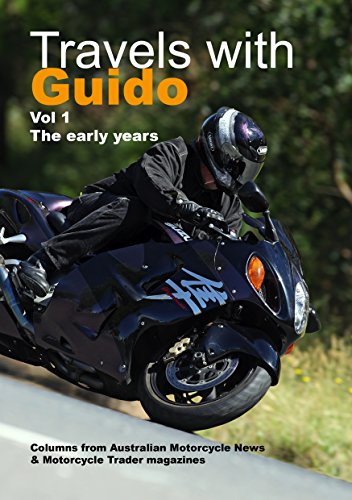Motorcycle Investor mag
Subscribe to our free email news

Profile – Laverda 750S Formula
by Guy 'Guido' Allen, June 2020
Last of the pukka Laverdas
Laverda's last sports bike, aka the 'Zane' series, was
a fascinating toy that struggled to find market traction
Laverda’s brief rebirth during the mid to late 1990s was something to be celebrated and without question the premium product of the era was the 750S Formula series.
This was effectively a revival series and, in final form, boasted a chassis bristling with premium gear. The bespoke aluminium beam frame hung off upmarket and fully-adjustable Paoli suspension, while braking was handled by gold series Brembos. The engine, meanwhile, was a fuel-injected, liquid-cooled parallel twin boasting near enough to 80 horses. Dry weight was a slim 185kg.
We got to ride a last-model 750S Formula, in late 1999. Twin-cylinder sports bikes were still big news in the market, so it was pitted against eight other models, in a comparo for Australian Rider magazine.
It was up against machines from BMW (R1100S), Buell (X1 Lightning), Ducati (900SS and 996 Strada), Honda (VTR1000F) , Moto Guzzi (1100 Sport Corsa) and Suzuki (TL1000R).
Here’s what we had to say at the time:
“It came as a pleasant surprise for Laverda fans that investor Francesco Tognon poured money into the brand and revived its fortunes at an impressive rate. He has since moved on but retains a 10 per cent share of the company.
“There’s a triple lurking in the developmental backstage, but for the time being the firm has been selling bikes with a much-reworked vertical twin that can trace its roots back to the Alpina and then Montjuic powerplants.
“These days it’s liquid-cooled with fuel injection and, in its jump from the recent 668 to the 750, has undergone yet another major redevelopment.
“Smaller riders like the Laverda much more than bigger folk. One described it as a pure sports bike with a faultless chassis and a powerplant that required two-stroke-style throttle use.
“Keep it on the boil and it’s very fast. But there is little in the way of low and mid-range power.”
When talking about value for money: “The Laverda is a tougher nut to crack. It’s a nice bike in the right circumstances, but the $21,995 ask seems a lot for what you get. It certainly puts the similarly-priced Moto Guzzi 1100 Sport Corsa ($22,495) in a better light.”
Just as an aside, the Ducati 900SS we had on the same trip was $18,995. The cheapest bike on the run was the Honda VTR1000 at $14,490, while the most expensive was the Ducati 996 Strada at $28,995.
Online owner groups reveal the 750 twins experienced more than their fair share of mechanical issues over time – not entirely surprising, given the powerplant development had never been overburdened with funding.
Early 750S models (1997-98) were particularly troubled, while the later (1999-2000) machines had received numerous updates. Even they weren’t trouble-free.
By far the most series issue was poor crankshaft balancing which, eventually, could lead to engine failure.
In an ideal world. A 750S Formula would be a fascinating toy to have in the shed and perhaps one you’d use sparingly. If you could find an example that had been thoroughly sorted, it might be worth a shot at the right price. But walk in with your eyes open as reliability is doubtful and repairs can be expensive.
They will have a little collector interest and can be an entertaining ride, though they've also been royally canned by some reviewers. Valuing one is difficult.
The firm limped on for a little while, eventually showing a 900 triple prototype and was ultimately bought by Aprilia, which in turn was swallowed up by Piaggio. The 750S meanwhile ended up being the last production sports bike to carry the famous name.
More tech detail here at Motorcycle Specs; More on
the late corporate history here at Wikipedia.
Good
Historic name
Quality chassis components
Bad
Cramped
Reliability

SPECS:
Laverda 750S Formula 1997-2000
(Note: 1997 model shown above, 1999 model at top)
ENGINE:
TYPE: Liquid-cooled, four-valves-per-cylinder, DOHC
parallel twin
CAPACITY: 748cc
BORE & STROKE: 83 x 69mm
COMPRESSION RATIO: 10.7:1
FUEL SYSTEM: Weber Marelli EFI
TRANSMISSION:
TYPE: Six-speed, constant-mesh,
FINAL DRIVE: Chain
CHASSIS & RUNNING GEAR:
FRAME TYPE: Aluminium beam
FRONT SUSPENSION: Paoli USD telescopic fork, full
adjustment
REAR SUSPENSION: Paoli monoshock, full adjustment
FRONT BRAKE: 320mm discs with four-piston Brembo calipers
REAR BRAKE: 245mm disc with two-piston Brembo caliper
DIMENSIONS & CAPACITIES:
DRY/WET WEIGHT CLAIM: 185/208kg
SEAT HEIGHT: 760mm
WHEELBASE: 1375mm
FUEL CAPACITY: 17lt
TYRES:
FRONT: 120/60-ZR17
REAR: 160/60-ZR17
PERFORMANCE:
POWER: 63kW @ 8000rpm
TORQUE: 75Nm @ 6800rpm
OTHER STUFF:
NEW PRICE Au$21,995 (US$15,000, GB£11,000) plus on-road
costs
WARRANTY 2 years unlimited km
-------------------------------------------------
Produced by AllMoto abn 61 400 694 722
Privacy: we do not collect cookies or any other data.

Archives
Contact



